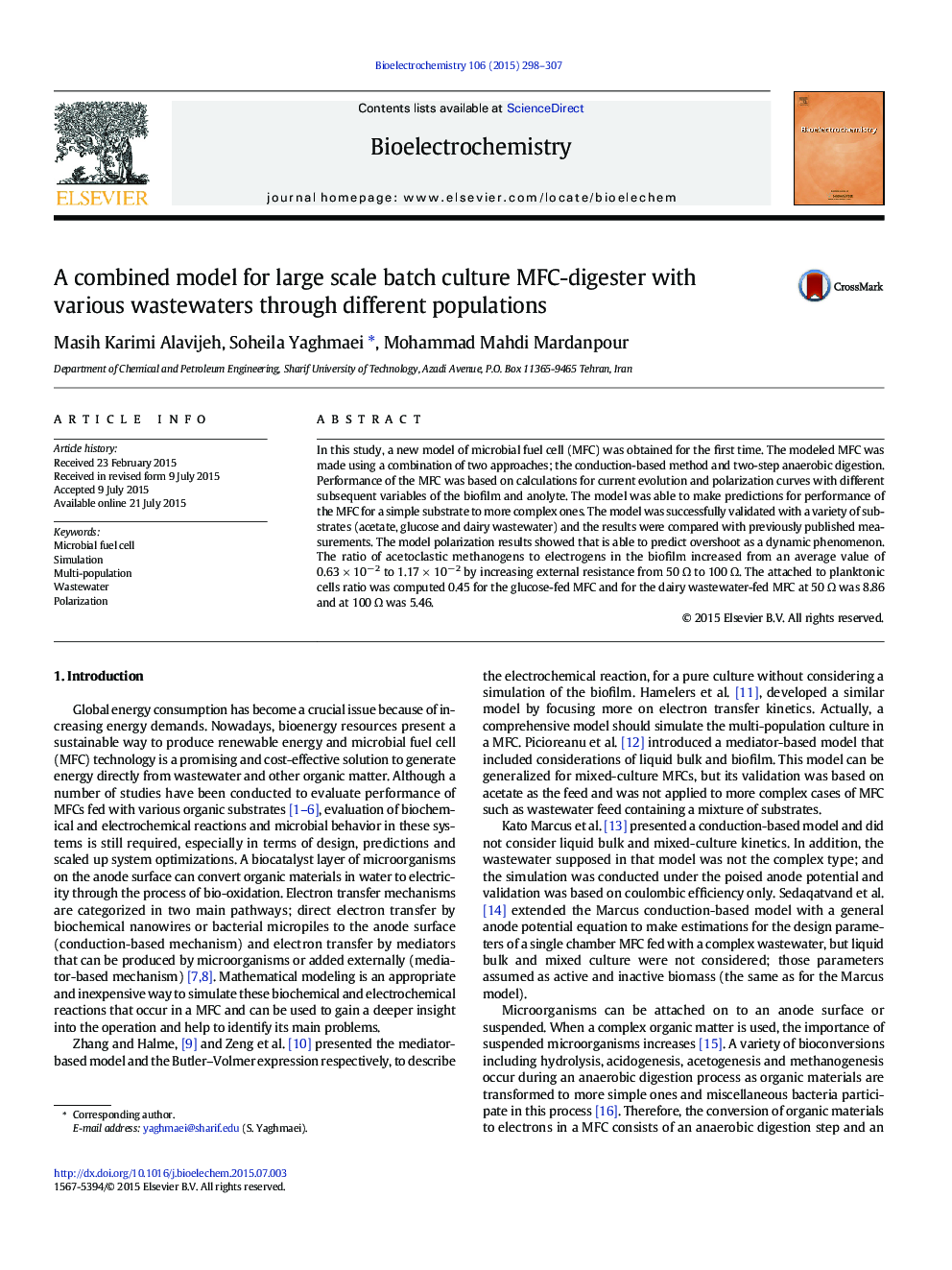| Article ID | Journal | Published Year | Pages | File Type |
|---|---|---|---|---|
| 1270739 | Bioelectrochemistry | 2015 | 10 Pages |
•A combined model for MFC with various substrates and multi-population was extended.•The model validation was successfully conducted with a variety of substrates.•Overshoot as a dynamic phenomenon was predicted.•The attached to planktonic cells ratio was computed 0.45 for the glucose-fed MFC.•Higher external resistance increases the acetoclastic methanogens activity.
In this study, a new model of microbial fuel cell (MFC) was obtained for the first time. The modeled MFC was made using a combination of two approaches; the conduction-based method and two-step anaerobic digestion. Performance of the MFC was based on calculations for current evolution and polarization curves with different subsequent variables of the biofilm and anolyte. The model was able to make predictions for performance of the MFC for a simple substrate to more complex ones. The model was successfully validated with a variety of substrates (acetate, glucose and dairy wastewater) and the results were compared with previously published measurements. The model polarization results showed that is able to predict overshoot as a dynamic phenomenon. The ratio of acetoclastic methanogens to electrogens in the biofilm increased from an average value of 0.63 × 10− 2 to 1.17 × 10− 2 by increasing external resistance from 50 Ω to 100 Ω. The attached to planktonic cells ratio was computed 0.45 for the glucose-fed MFC and for the dairy wastewater-fed MFC at 50 Ω was 8.86 and at 100 Ω was 5.46.
